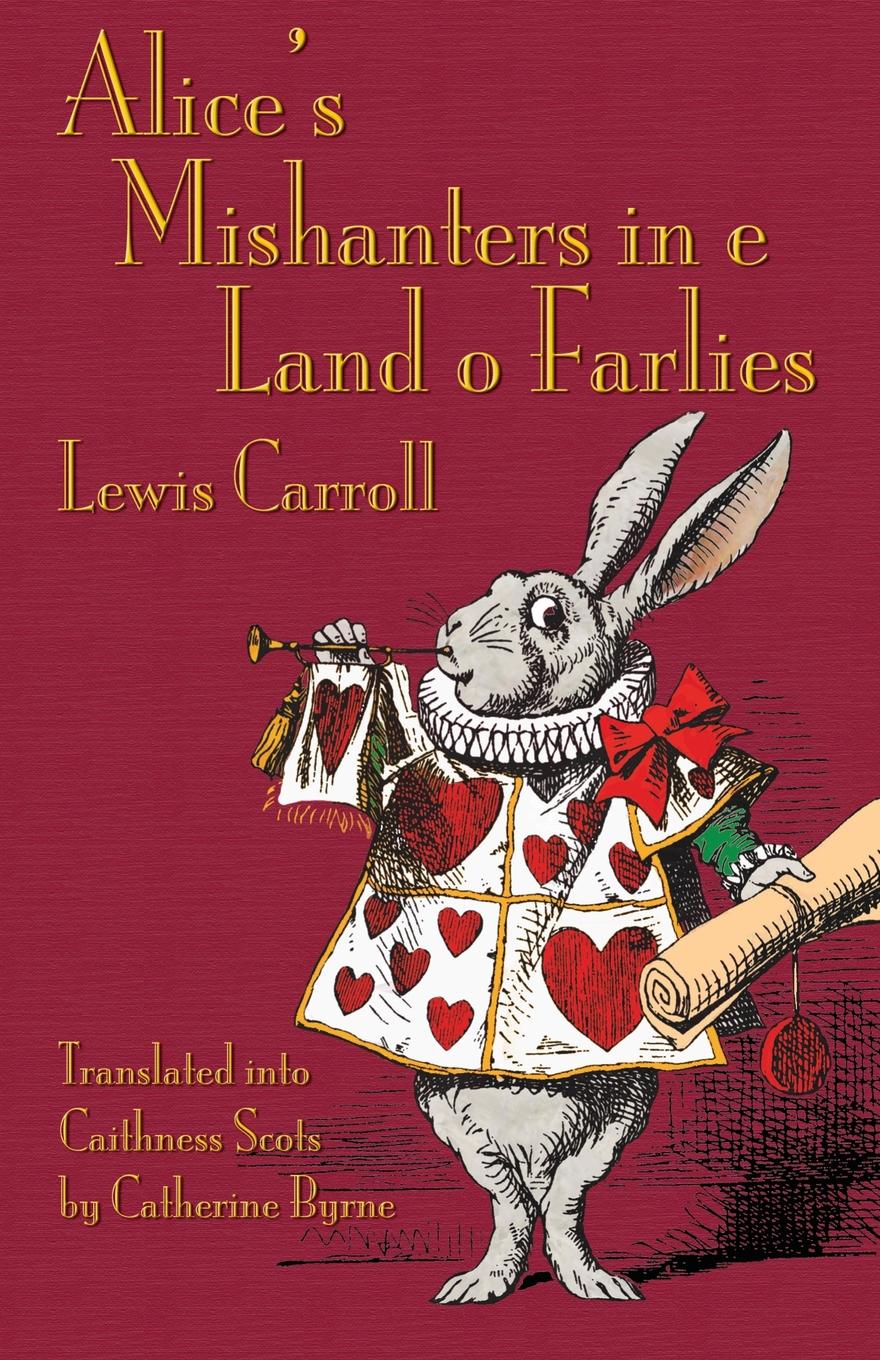Alice’s Mishanters in e Land o Farlies
Alice’s Adventures in Wonderland in Caithness Scots

By Lewis Carroll, translated into Caithness Scots by Catherine Byrne
First edition, 2014. Illustrations by John Tenniel. Cathair na Mart: Evertype. ISBN 978-1-78201-060-9 (paperback), price: €12.95, £10.95, $15.95.Click on the book cover on the right to order this book from Amazon.co.uk!
Or if you are in North America, order the book from Amazon.com!
| “In at direction,” e Cat sade, wavan ids richt paw roond, “lives a Hatter: an in at direction,” wavan e ither paw, “lives a March Hare. Visit any wan ee lek: they’re both mad.” | “In that direction,” the Cat said, waving its right paw around, “lives a Hatter: and in that direction,” waving the other paw, “lives a March Hare. Visit either you like: they’re both mad.” | |
| “But A dinna want till go amang mad foulk,” Alice remarked. | “But I don’t want to go among mad people,” Alice remarked. | |
| “Oh, ee canna help at,” sade e Cat: “we’re all mad here. A’m mad.ye ’re mad.” | “Oh, you ca’n’t help that,” said the Cat: “we’re all mad here. I’m mad. You’re mad.” | |
| “How do ee ken A’m mad?” sade Alice. | “How do you know I’m mad?” said Alice. | |
| “Ee mosst be,” sade e Cat, “or ee widna hev come here.” | “You must be,” said the Cat, “or you wouldn't have come here.” | |

|
||
| When Charles Lutwidge Dodgson set out one afternoon in July 1862 to invent a story about a girl disappearing down a rabbit hole, he could never have guessed that some 150 years later so many people would still be so entranced by the product of his imagination. | ||
| Sunshine on the river, three little girls being rowed leisurely along and begging to hear a story, and the young clergyman at the oars turning to look over his shoulder at Alice at the helm, and saying: “Alice was beginning to get very tired of sitting by her sister on the bank…” | ||
| To tackle a translation of the first book into the Caithness dialect of Scots to be part of this great project was a challenge. Catherine Byrne met it by imagining how her mother, reading the book aloud, would have sounded—“hearing my mother’s voice in my head”, as she put it in an e-mail to this writer. The result is engaging and amusing, and those familiar with the Caithness accent will recognize the achievement at once. | ||
| The dialect has not fared well in the last century, a fate shared with some regional variations of other languages. The causes of the decline are easy to identify: increasing movement of people and the resulting dilution of the dialect-speaking core; the influences of mass media; and a lack of interest coupled with both unawareness of how unique the dialect is and a misguided sense of it being a sign of poor education and lack of status. | ||
| Catherine Byrne’s rendering of Alice into the dialect is very welcome. We hope that readers will enjoy it. Dodgson loved wordplay and we think that he would have been intrigued to hear his work in a dialect and accent he almost certainly never encountered. Welcome to Alice’s Mishanters in e Land o Farlies. | ||
| —James Miller |